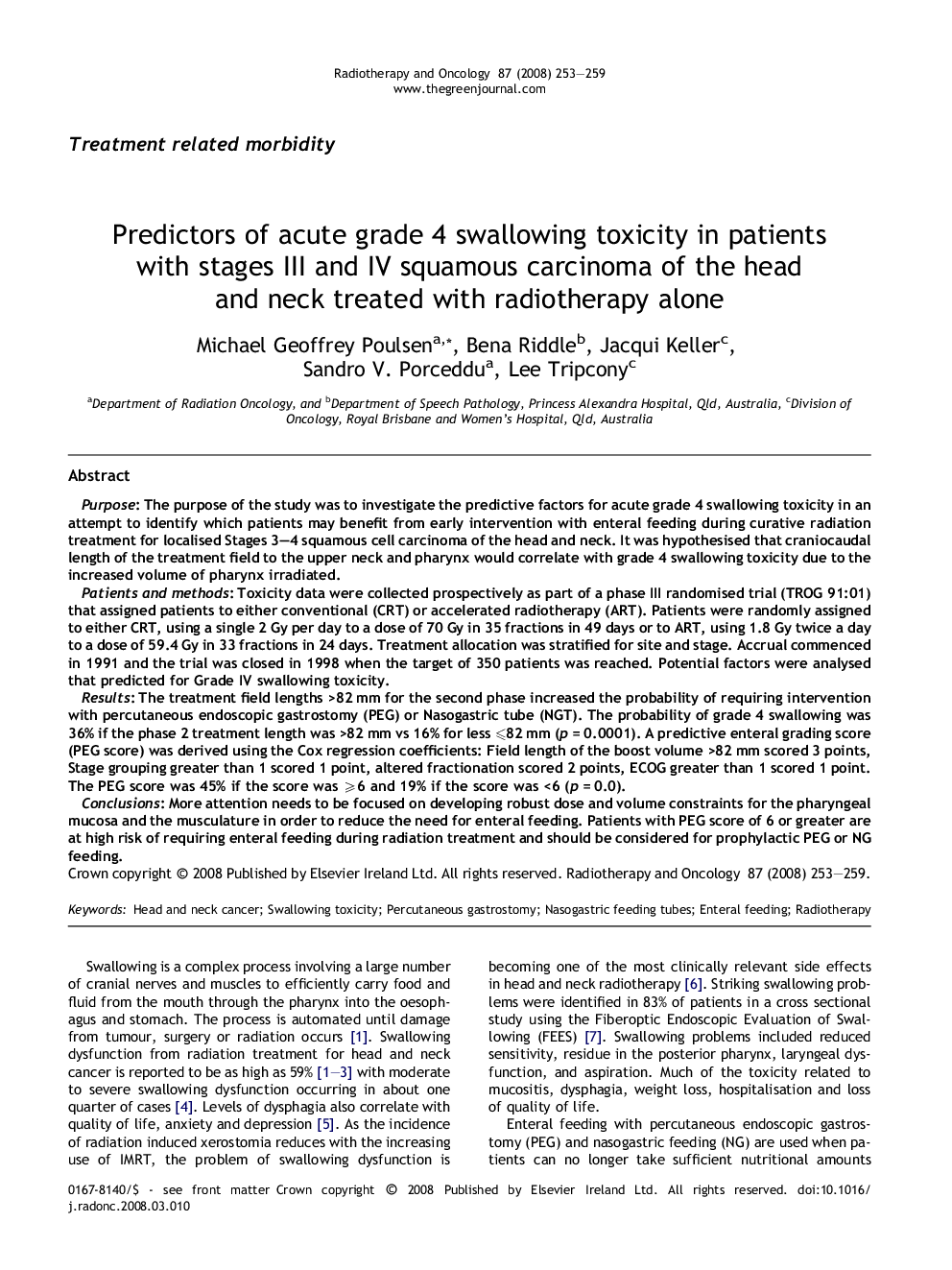| Article ID | Journal | Published Year | Pages | File Type |
|---|---|---|---|---|
| 2160580 | Radiotherapy and Oncology | 2008 | 7 Pages |
PurposeThe purpose of the study was to investigate the predictive factors for acute grade 4 swallowing toxicity in an attempt to identify which patients may benefit from early intervention with enteral feeding during curative radiation treatment for localised Stages 3–4 squamous cell carcinoma of the head and neck. It was hypothesised that craniocaudal length of the treatment field to the upper neck and pharynx would correlate with grade 4 swallowing toxicity due to the increased volume of pharynx irradiated.Patients and methodsToxicity data were collected prospectively as part of a phase III randomised trial (TROG 91:01) that assigned patients to either conventional (CRT) or accelerated radiotherapy (ART). Patients were randomly assigned to either CRT, using a single 2 Gy per day to a dose of 70 Gy in 35 fractions in 49 days or to ART, using 1.8 Gy twice a day to a dose of 59.4 Gy in 33 fractions in 24 days. Treatment allocation was stratified for site and stage. Accrual commenced in 1991 and the trial was closed in 1998 when the target of 350 patients was reached. Potential factors were analysed that predicted for Grade IV swallowing toxicity.ResultsThe treatment field lengths >82 mm for the second phase increased the probability of requiring intervention with percutaneous endoscopic gastrostomy (PEG) or Nasogastric tube (NGT). The probability of grade 4 swallowing was 36% if the phase 2 treatment length was >82 mm vs 16% for less ⩽82 mm (p = 0.0001). A predictive enteral grading score (PEG score) was derived using the Cox regression coefficients: Field length of the boost volume >82 mm scored 3 points, Stage grouping greater than 1 scored 1 point, altered fractionation scored 2 points, ECOG greater than 1 scored 1 point. The PEG score was 45% if the score was ⩾6 and 19% if the score was <6 (p = 0.0).ConclusionsMore attention needs to be focused on developing robust dose and volume constraints for the pharyngeal mucosa and the musculature in order to reduce the need for enteral feeding. Patients with PEG score of 6 or greater are at high risk of requiring enteral feeding during radiation treatment and should be considered for prophylactic PEG or NG feeding.
